A while back I dissected the Maxim DS18B20 temperature sensor, along with a counterfeit one. Today we’ll have a look at a couple more 18B20s from different manufacturers, all of them Chinese. I found a web store in China that sold me the XSEC SE18B20, the Novosense NS18B20, the 7Q-Tek QT18B20, the GXCAS GX18B20W and the UMW (Youtai) DS18B20. Prices varied from 65 cents to about two Euros apiece.
To get an idea of their performance, I put one of each on my Arduino board and placed it outside, where it was quite cold:
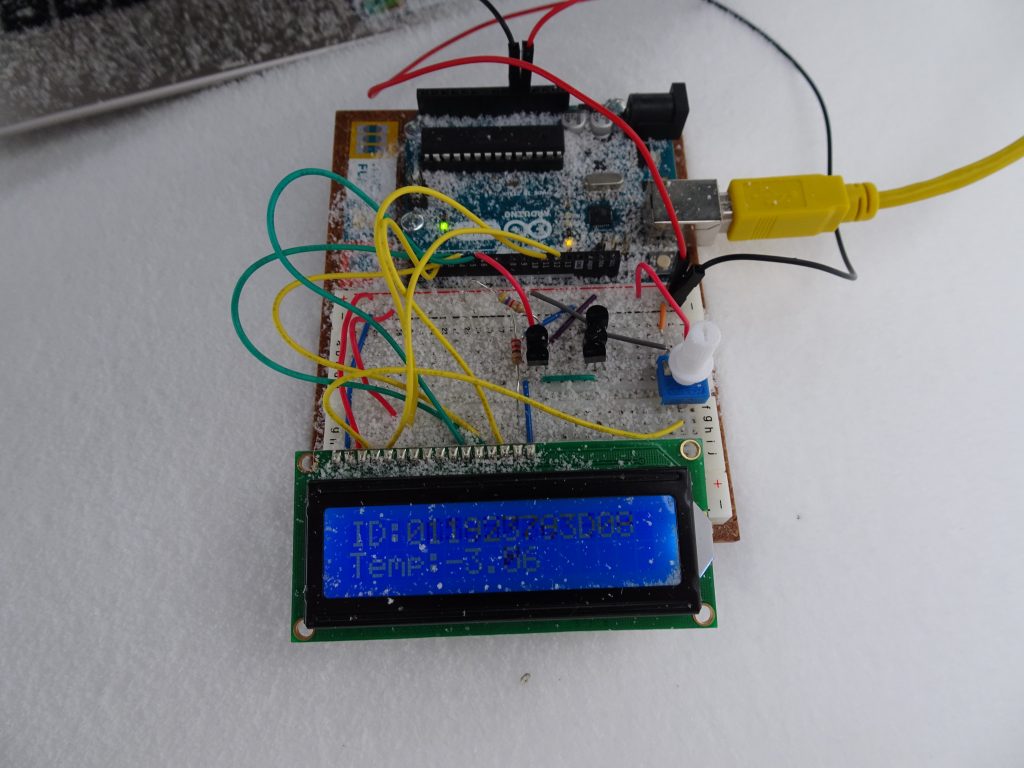
I took it back inside after about fifteen minutes, fearing that all this snow could wreak havoc with the bare circuit board and the breadboard (not to mention my mini laptop). Below you can see the how each sensor tracked the temperature:

Clearly, they all work. However, there’s a difference of about one degree between the highest and lowest reading among the five. Of course there’s no way to tell which one is the most accurate without a calibrated thermometer, but it’s clear that the UMW is always on the high side while the Novosense is on the low side of the range.

I also ran the setup indoors for a while. Here we see the one degree difference again, but the smaller scale of this graph also shows that the XSEC chip is a bit noisier than the others.
Like the original DS18B20, all of these chips have a unique serial number that can be used to identify each individual chip. The ones I bought have the following numbers:
| Manufacturer | Sample 1 | Sample 2 | Sample 3 |
| XSEC | 3C01A8169CFE | 3C01A81605A7 | 3C01A8166D85 |
| Novosense | 0A5050655600 | 0A50503C3E00 | 095050352000 |
| 7Q-Tek | 011871EBD1FF | 011871FD3EFF | 011871F01CFF |
| GXCAS | 0119238CBCBC | 011923793D08 | 0119238C718C |
| UMW (Youtai) | 012066FFBCEE | 0120666EBA42 | 0120664B765B |
Each manufacturer seems to use a separate block of numbers, all of them much higher than the numbers Maxim has used so far. Using large numbers reduces the odds of clashing with Maxim’s numbers, but of course all second-source manufacturers still need to make sure they don’t clash among each other either. From that point of view 7Q-Tek, GXCAS and UMW appear to be quite close to each other, but there’s still several billion numbers between them so it’s unlikely they’ll collide in the immediate future.
There’s an interesting anomaly in the numbers used by Novosense: two of them start with 0A5050, but the third one starts with 095050. Since these chips are presumably from the same batch, this makes me wonder if this is a manufacturing error: going from 0A to 09 requires just one bit to shift position.
Now let’s have a closer look at each of these five chips, starting with the XSEC SE18B20:
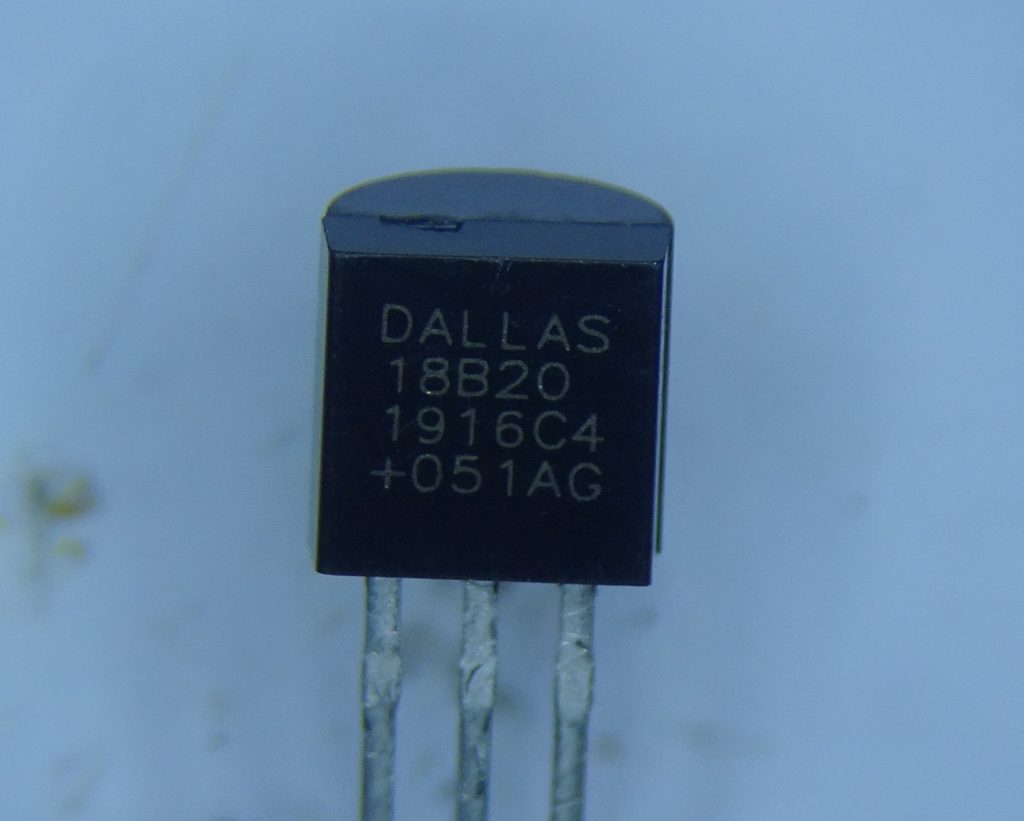
Its package immediately shows something wrong: it’s labelled exactly like a Maxim DS18B20! Apparently XSEC already prints a fake label on their chips, making it very easy for these to end up in the supply chain of unsuspecting customers. Either that, or XSEC has itself become victim of fake devices…. In any case, XSEC (Xi’an Supermicro Electronics Co), based in Xi’an, produces a number of motor drivers, interface ICs and this temperature sensor. It appears to be a rather small manufacturer that also shows very little information on its website: there’s not even a datasheet for this chip.
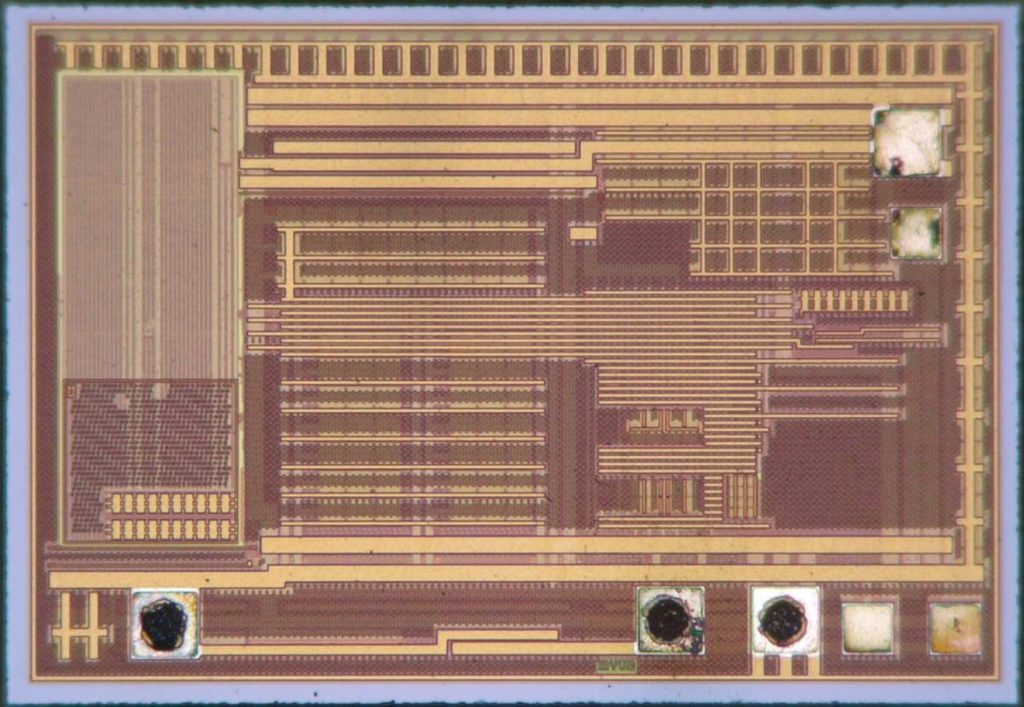
The die seems to be produced in a reasonably modern process, judging from the high coverage ratio of the metal layers. Apart from the three bond pads there are also three trim pads used during production.
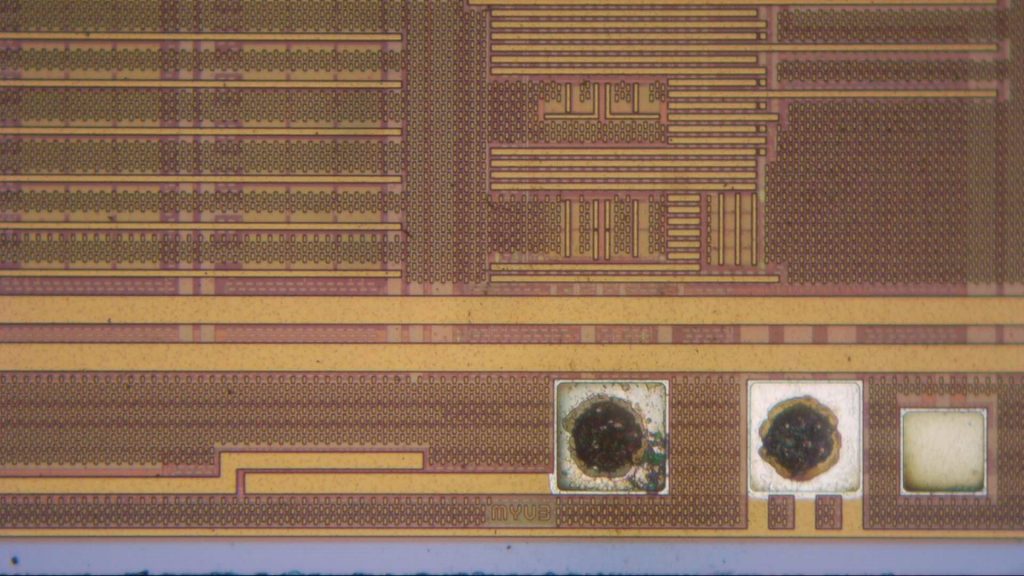
The only identifying feature is a very small “MYV3” near the lower edge of the die. There are no other markings, not even a manufacturer’s logo.
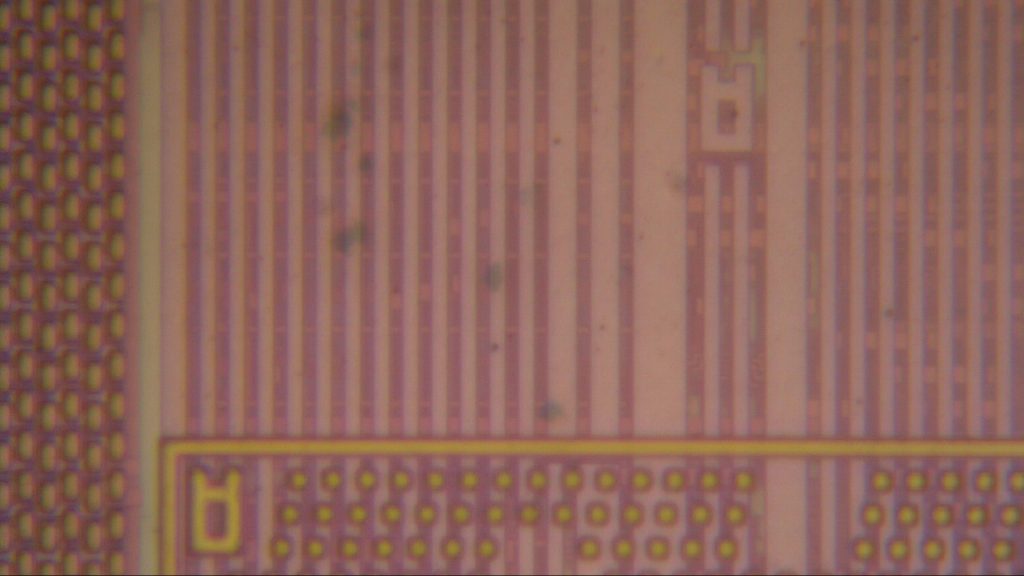
Zooming in further we do find these two letters showing that the top metal layer and the one below it are both revision A. But the density of the metal features makes it impossible to see any of the structures below.
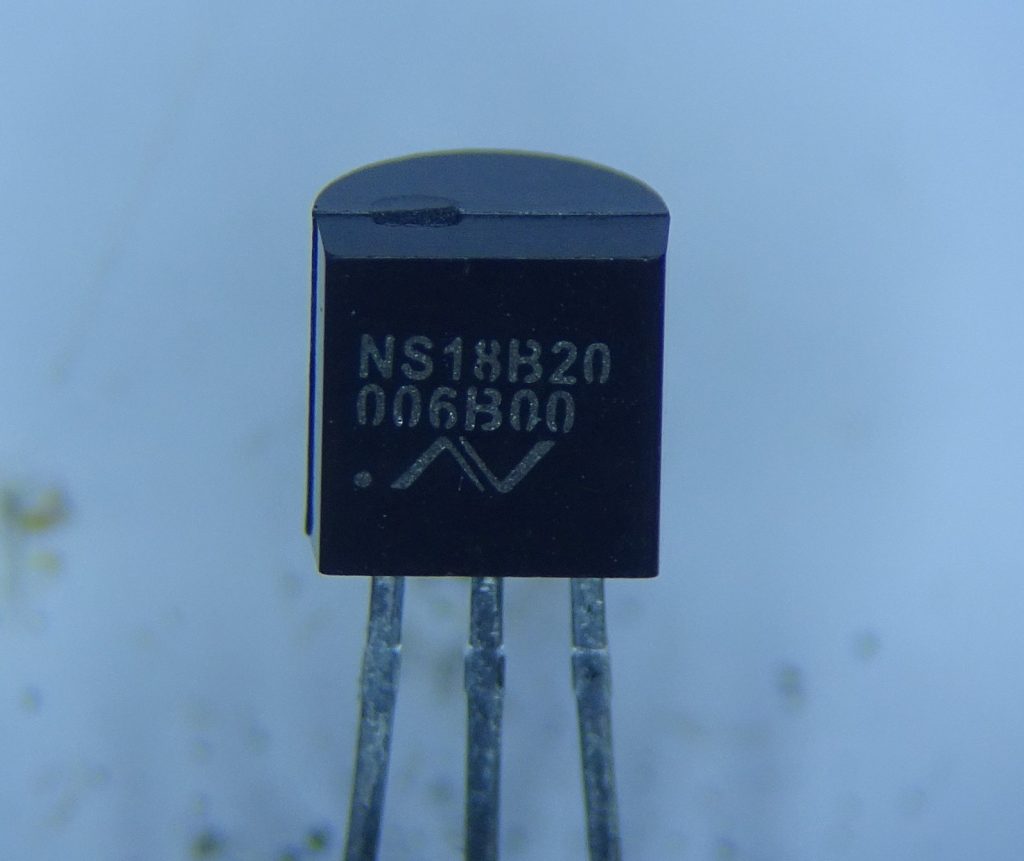
Next up is the Novosense NS18B20. Suzhou Novosense Microelectronics specializes in sensor ICs, including accelerometers, pressure sensors and temperature sensors.
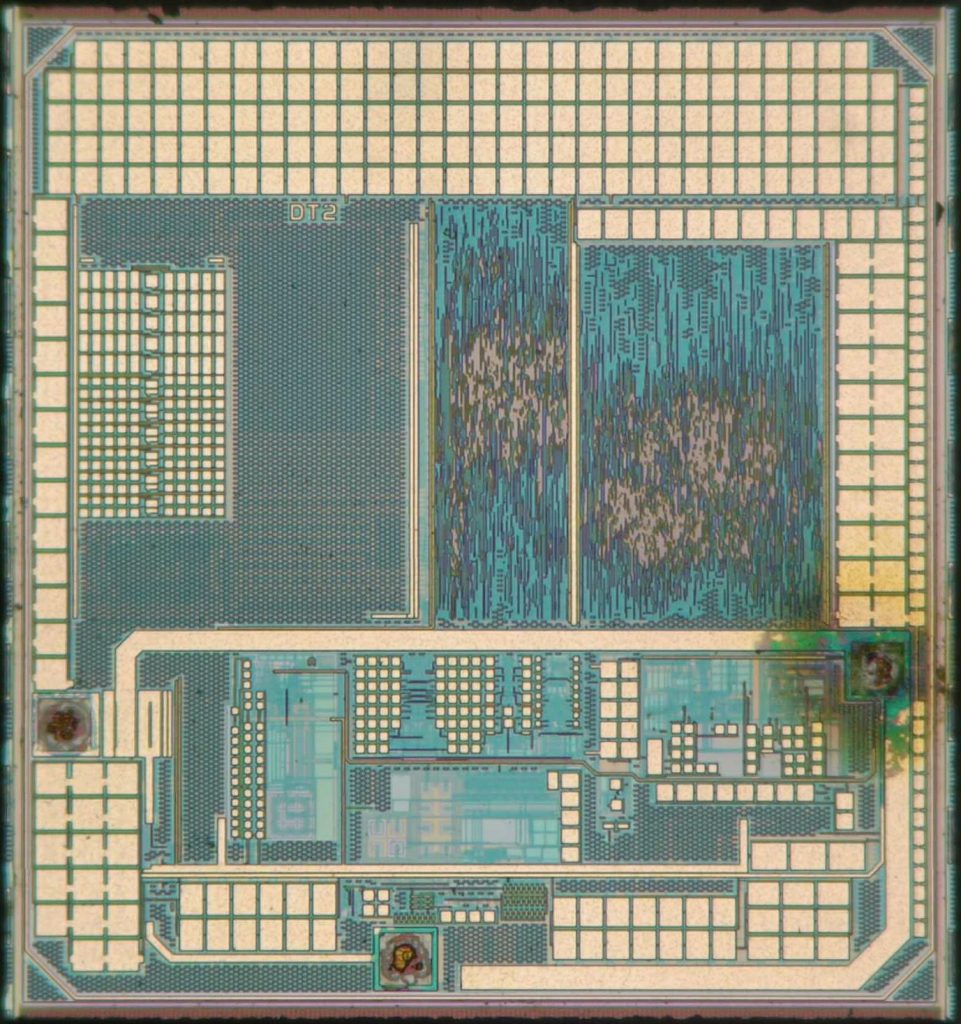
The die is clearly divided into an analog section at the bottom and a digital engine at the top. There are only three bond pads and no test pads. I’m not sure what happened to the pad on the right: it kind of looks like it exploded!
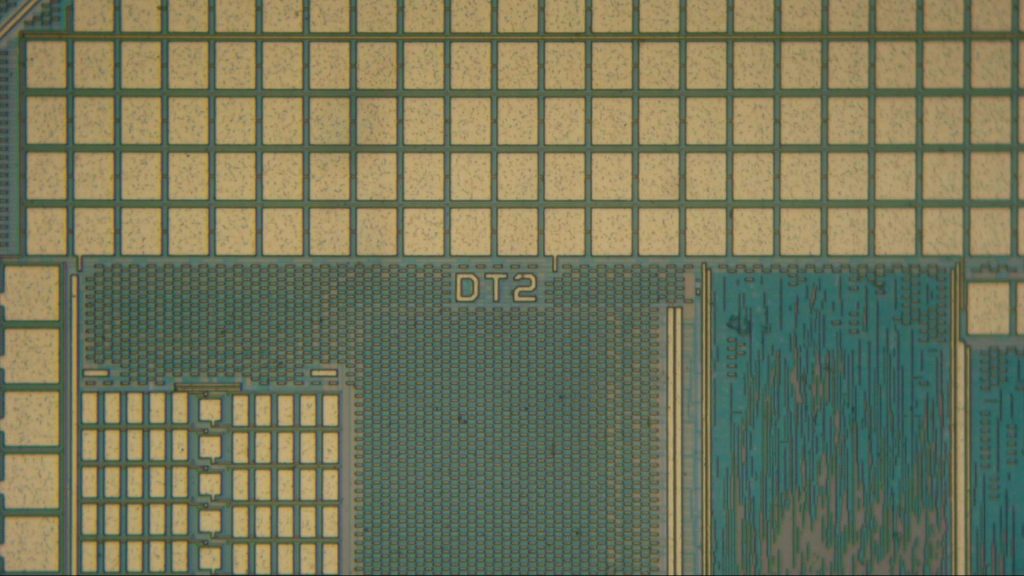
The die is labelled “DT2”. Again, no manufacturer logo or copyright date. It is also made in a reasonably modern technology, but with apparently not-so-strict metal coverage rules.
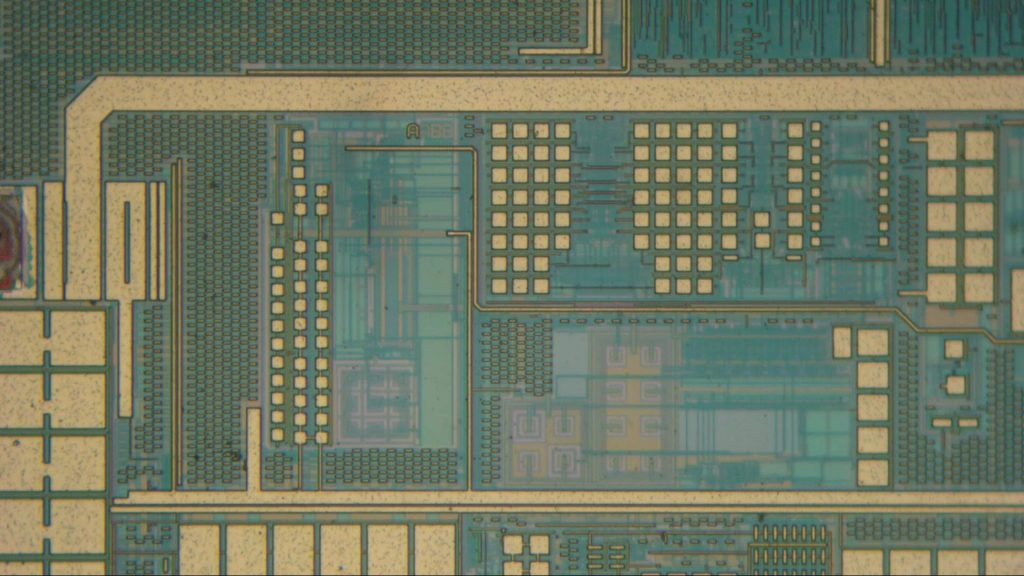
The lack of top metal allows us to look at the analog circuits below. We see a square array of transistors on the left that could very well be the sensor core.
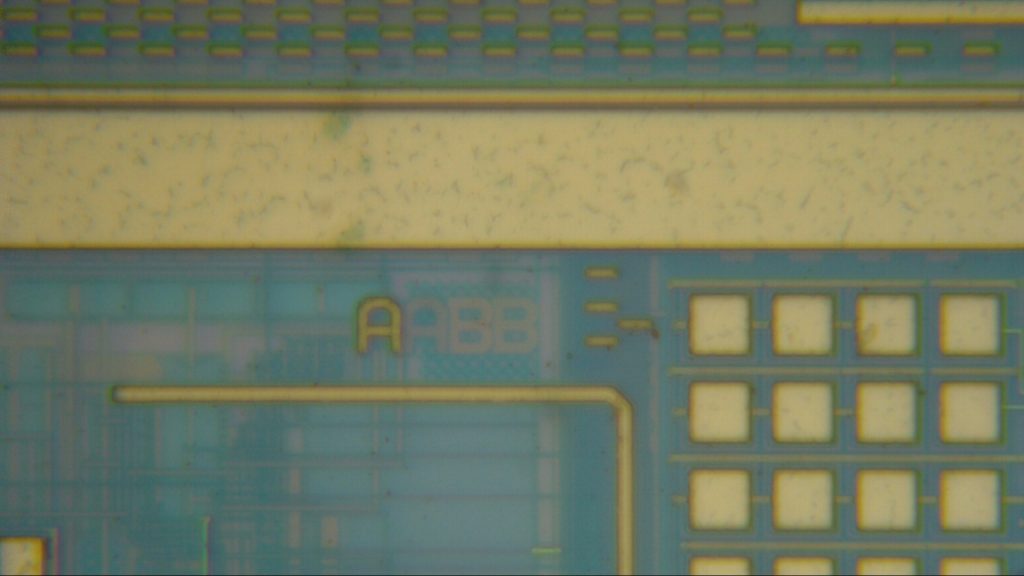
The various revision letters are neatly arranged next to each other. It looks like we have four metal layers, at revisions B, B, A and A (from bottom to top).
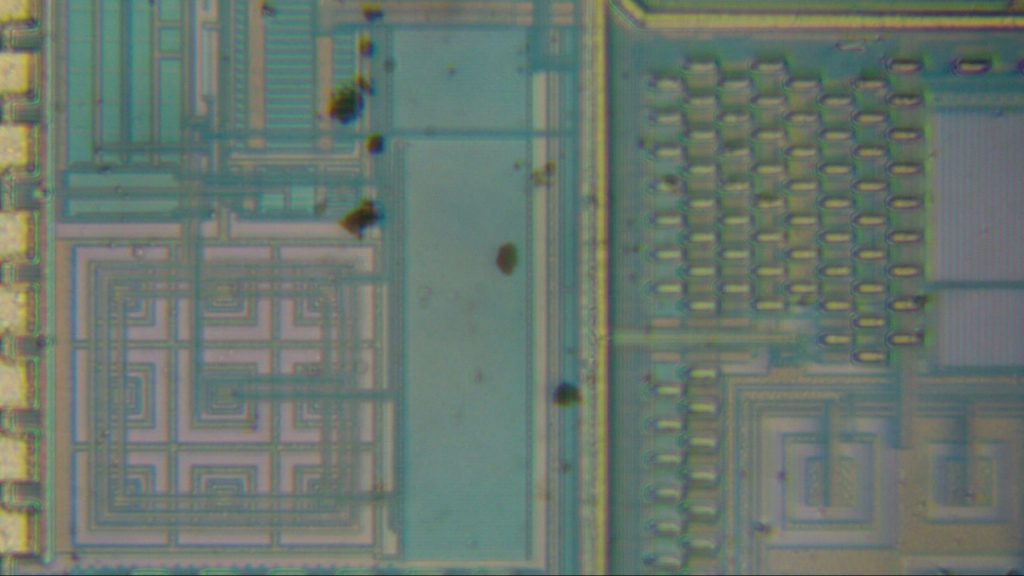
Zooming in further we see a square 3×3 array of bipolar transistors (likely the temperature sensor core) with large resistors next to it.
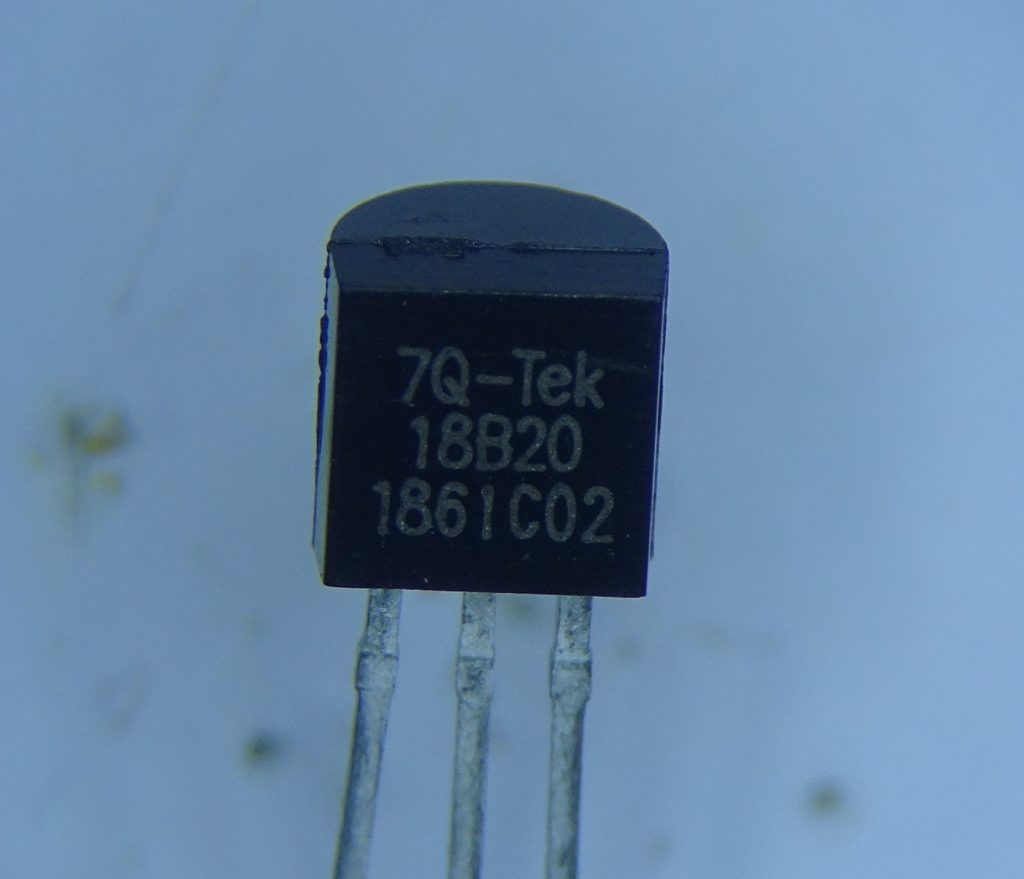
7Q-Tek, or officially Beijing Qixin Zhongchuang Technology Co, is a company based in Beijing that manufactures temperature sensors.
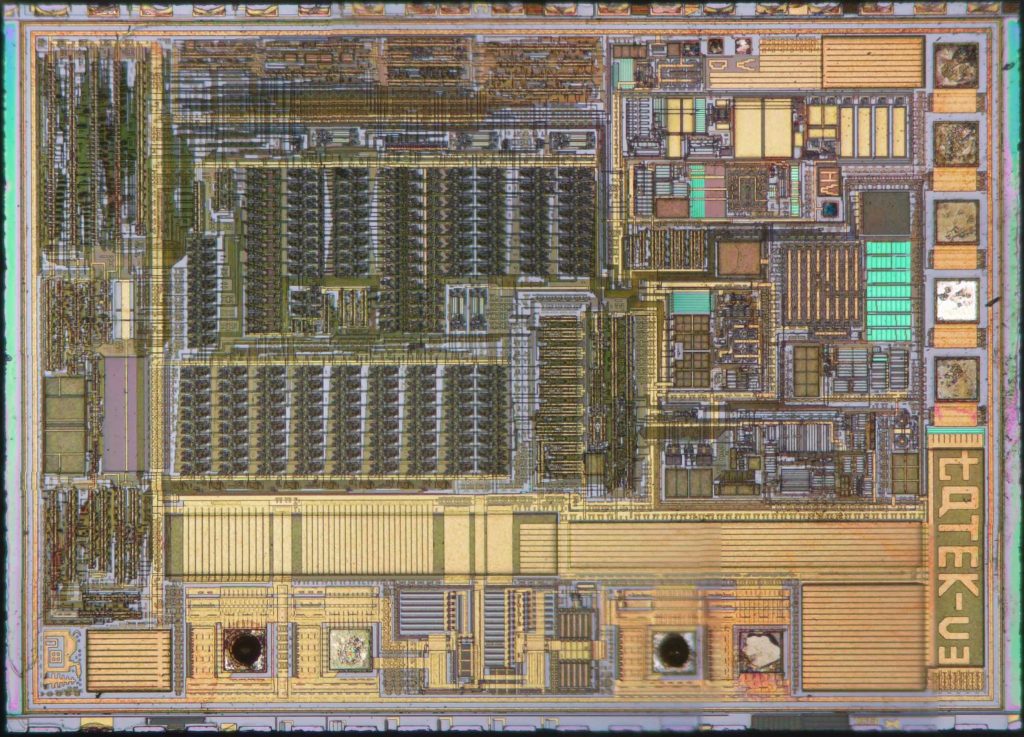
The die looks much more colourful and interesting than the ones we’ve seen so far. It is clearly made in an older technology: the EEPROM banks are clearly visible in the centre-left and there is limited metal coverage. There are a total of nine pads visible, which means that there are six used for trimming and calibration. And for the first time so far, we get a clear indication of the manufacturer: the designers wrote the company’s name in huge letters at the right edge of the die (using the Chinese character 七, which means “seven”, as the first character).
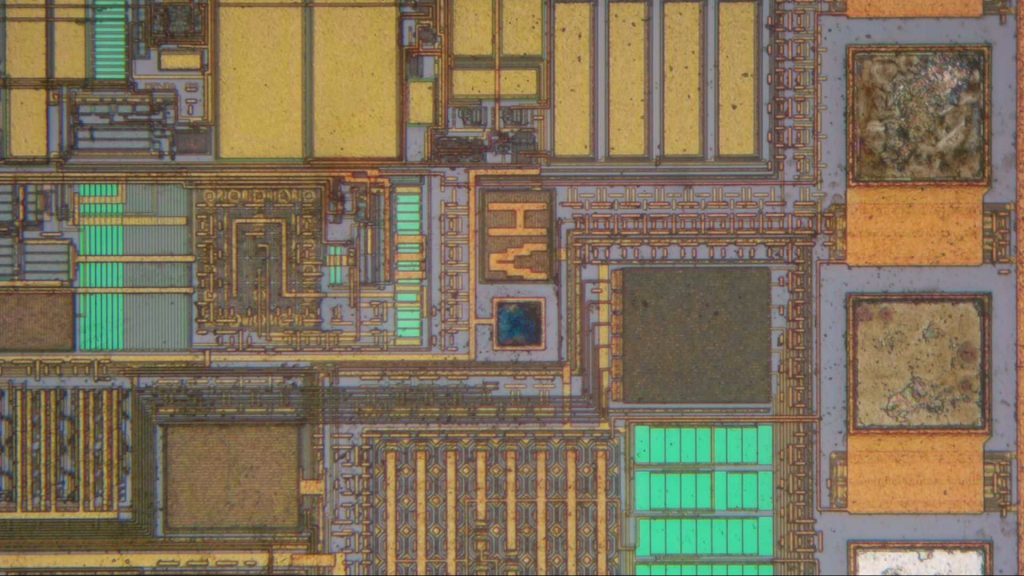
We also find the letters “HV” at the top-right corner. It probably doesn’t mean “high voltage” since there’s none of that on this chip, so it might be someone’s intitials. Then again, the letter “V” is not used when transliterating Chinese names. Maybe it means something different altogether?
At the lower end of this picture we see a square array that looks like a set of bipolar transistors. This could very well be the temperature sensing core.
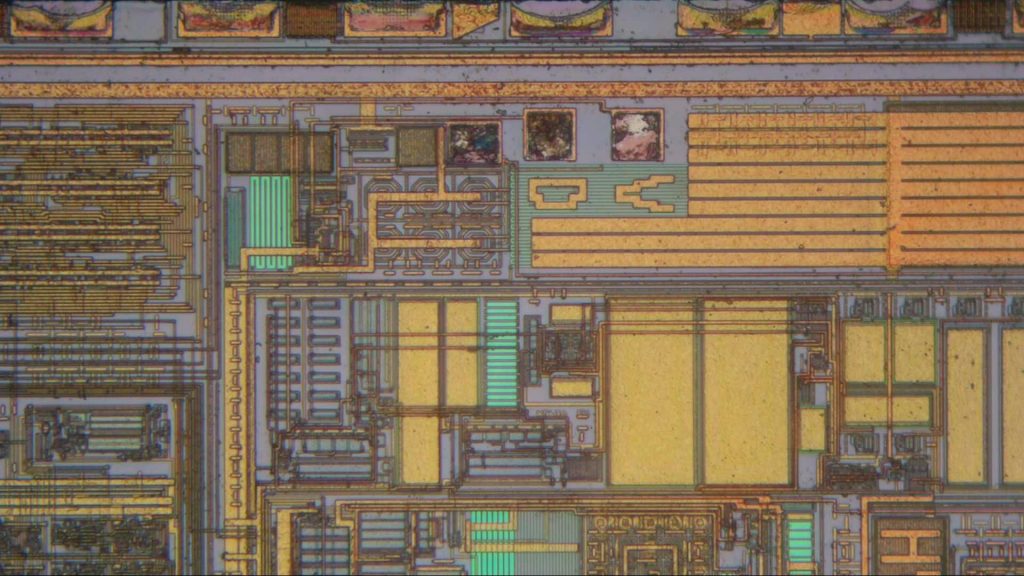
We also find the letters “VD” in another corner of the analog circuitry. Immediately to its left are six round transistors, and above it are two probe pads.
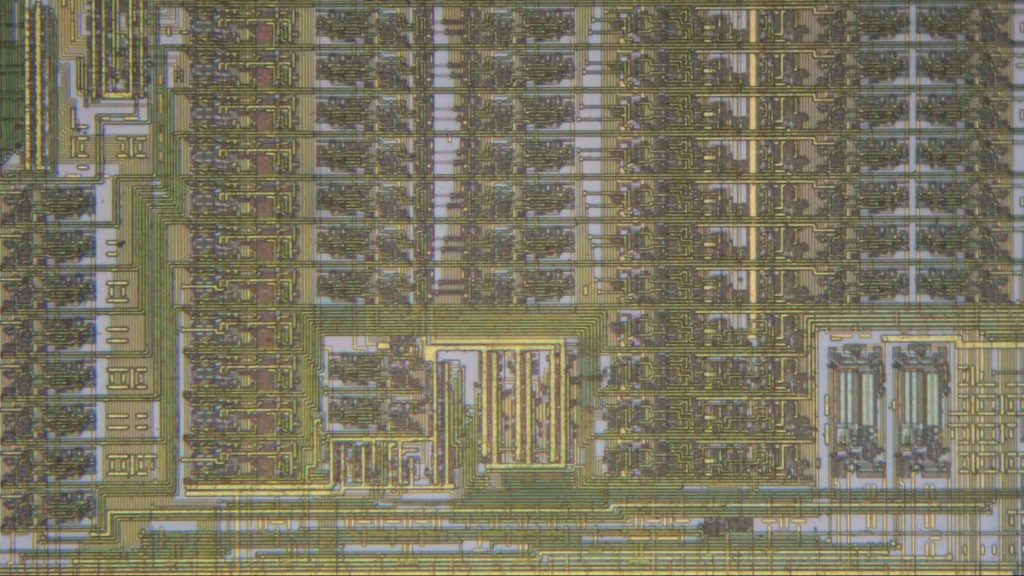
The EEPROM array is clearly made of rather large memory cells, similar to the original Maxim part. There are however no laser fuses to be found anywhere, so the chip’s serial number must also be stored in these cells.
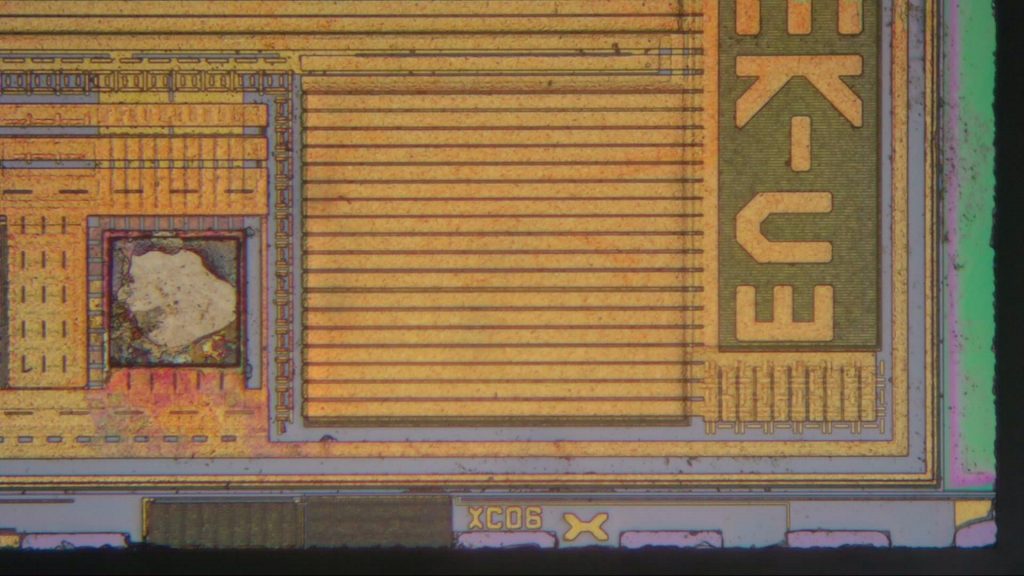
Right at the edge of the chip is also the designator “XC06” and a stylized “X”. This shows us that this chip is made by German foundry Xfab, as they have a process called XC06. This is a 0.6 micron 5V CMOS process with three metal layers. I’m rather surprised to find an Xfab process here, because this means the chip was made in Germany or the US. So this chip was designed in China and made in the West, the opposite of what usually happens.
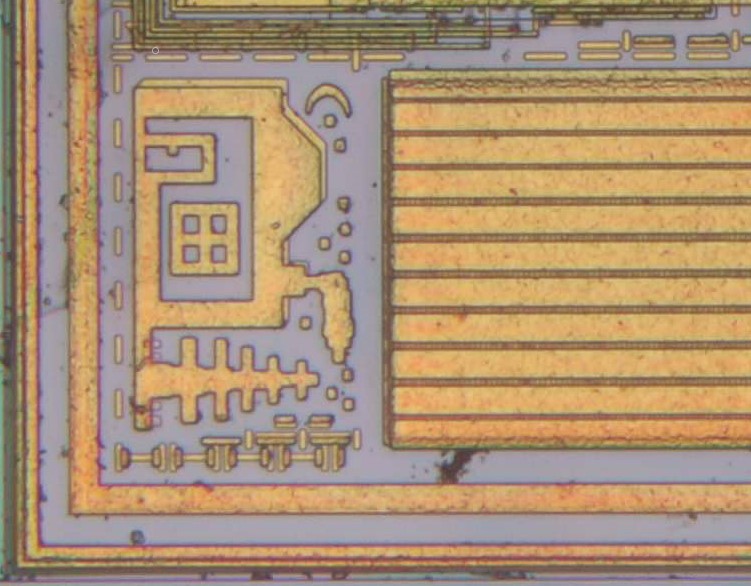
At the bottom-left corner we find this interesting feature. At first it wasn’t clear to me what I was looking at, until I turned my head 90 degrees to the right: this is a little house with smoke coming out of its chimney, a tree next to it, and a crescent moon in the sky! Thank you, 7Q-Tek designers, for this beautiful piece of chip art!
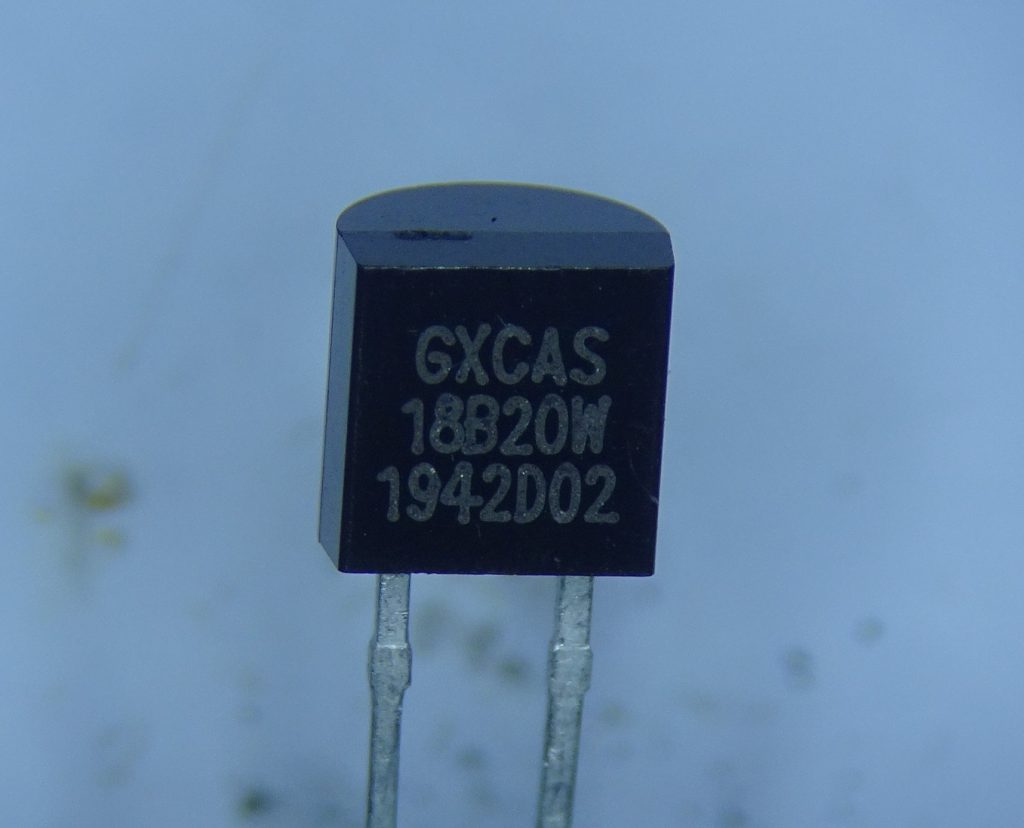
Next is the GXCAS GX18B20W. Based in Beijing, GXCAS manufactures pressure sensors and temperature sensors. This particular example is housed in a two-pin TO-92 package, but a three-pin version (like all the others) is also available; I got this one because I didn’t pay enough attention while ordering… However, it works just fine in two-wire mode with only a pull-up resistor, unlike the original Maxim part which requires either a switched hard pull-up or an external supply.
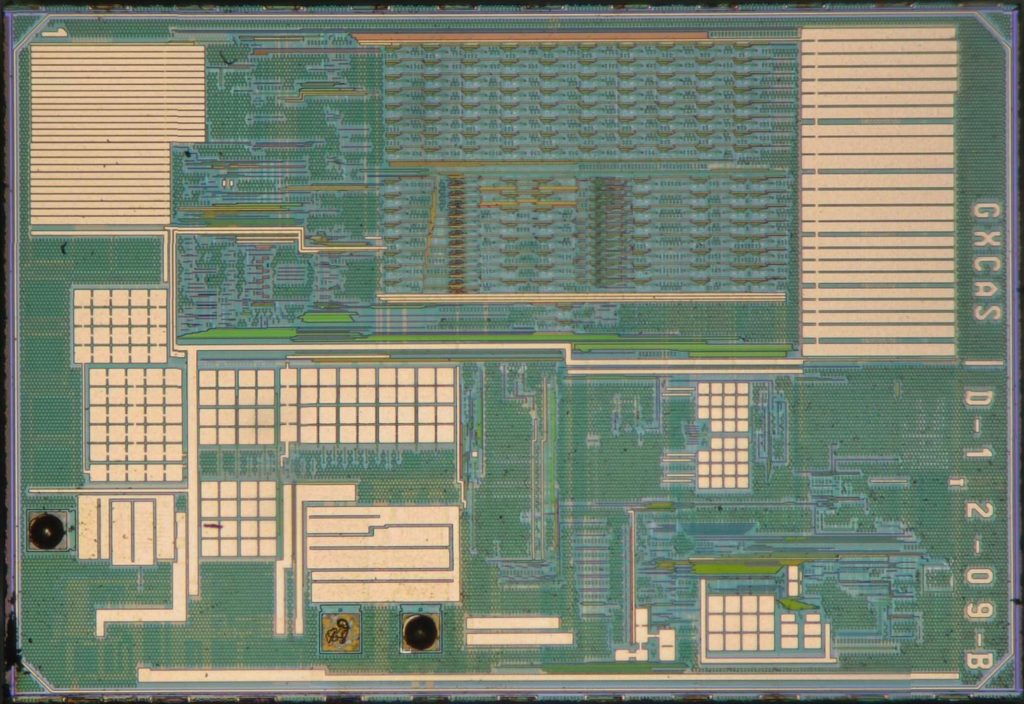
Inside, this chip looks very familiar: it’s the same one we saw inside the fake “Maxim” part. GXCAS clearly labels its chip with its brand name and some internal product code (D-12-09-B). Again, there are only three bond pads; no trim pads or laser fuses here.
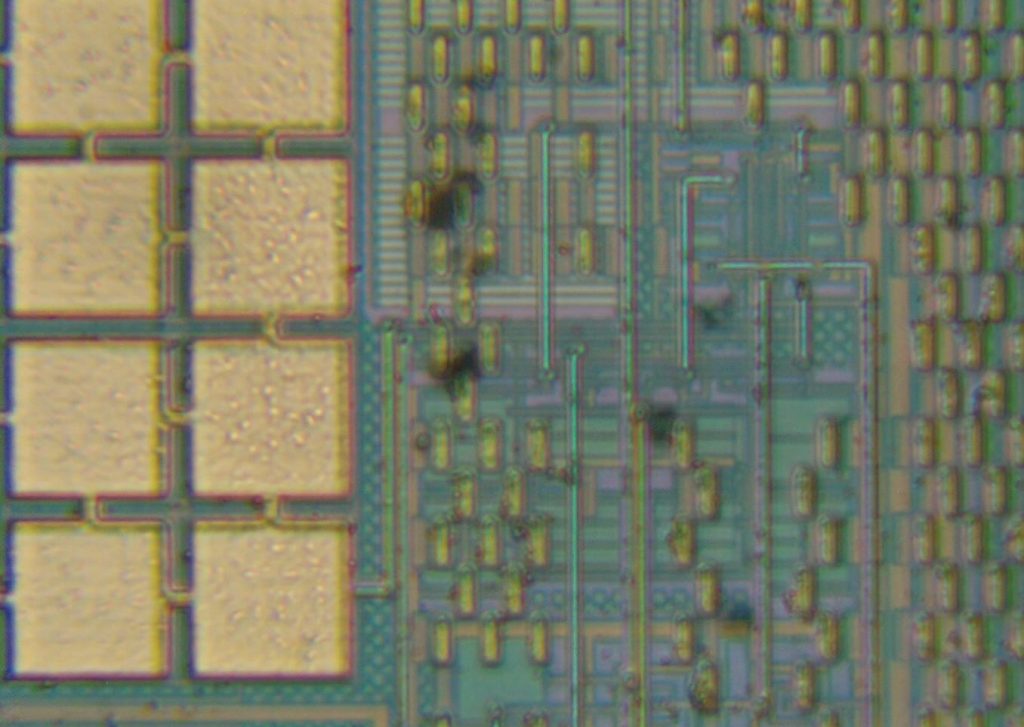
Zooming in on the analog section, we can just about see some circuits below all the dummy top metal. This is clearly a more advanced process than the 0.6 micron we saw at 7Q-Tek; I’m guessing this is something like 0.18 micron.
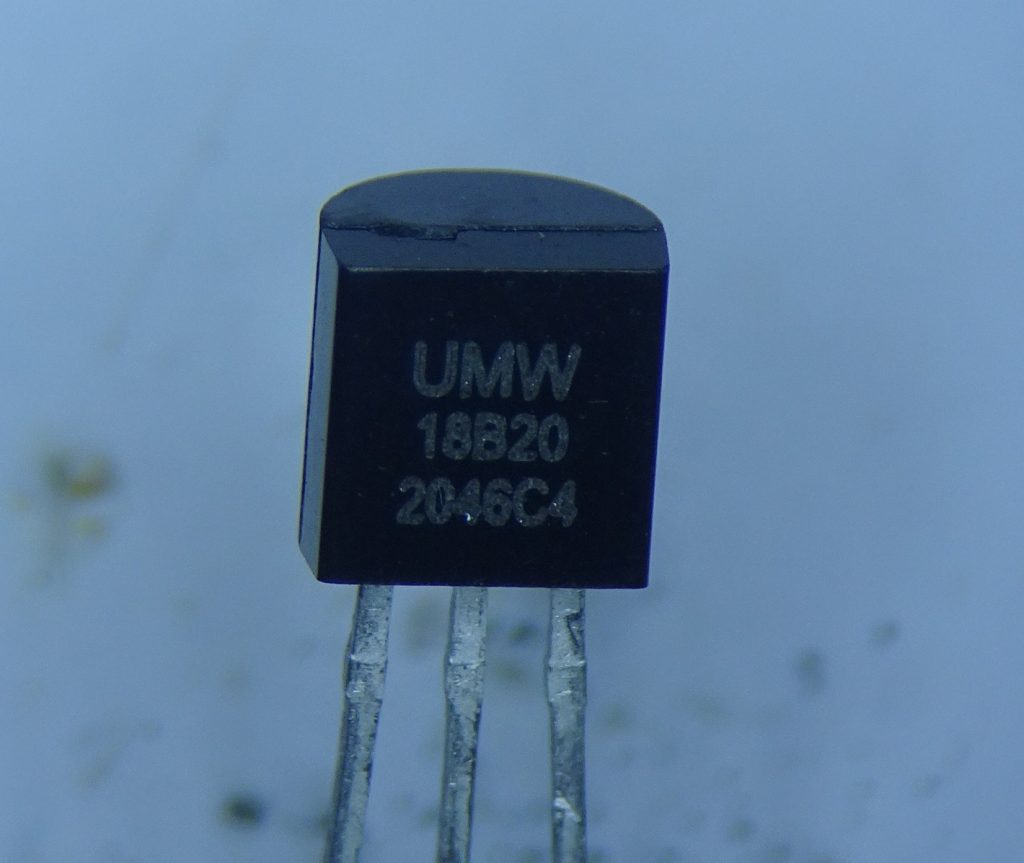
The last chip for today is made by UMW. Officially known as Youtai Semiconductor Co, it’s based in Chongqing and produces a rather large range of analog, power management and even discrete semiconductors.
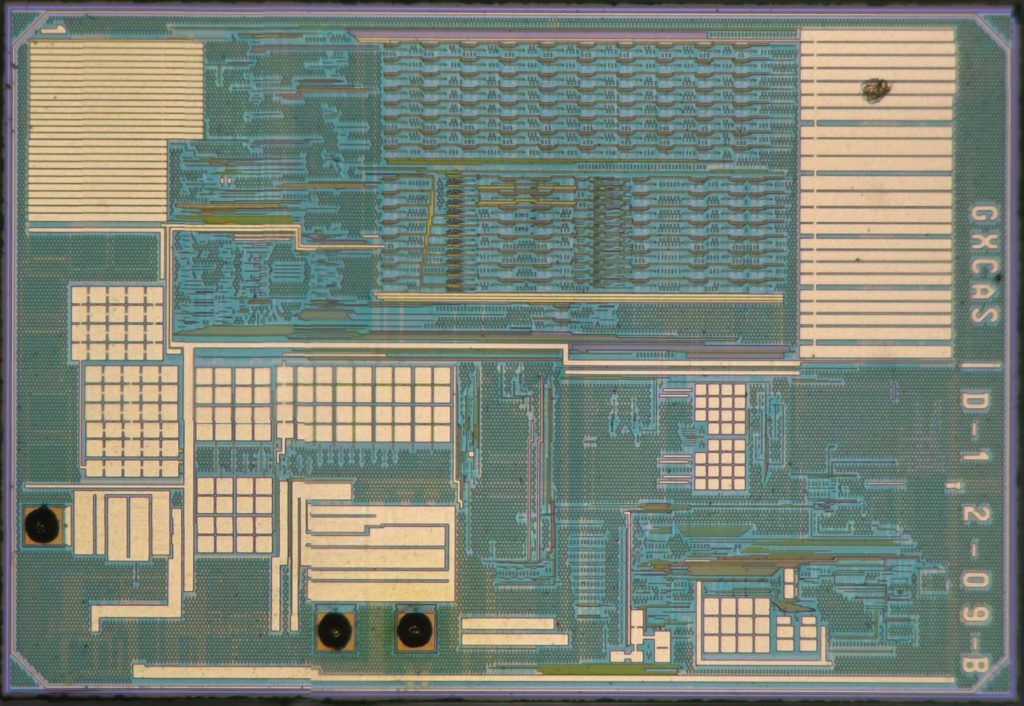
Inside however, we find exactly the same chip as we found in the GXCAS part! This is rather confusing: does UMW simply re-sell GXCAS designs under its own name? Does it trim or package GXCAS dies itself? Or did it perhaps fall victim to chip counterfeiting, with someone printing their name on a batch of GX18B20s? If you have any information please let me know!

CT18B20,QT18B20,GX18B20 are all consider good replacements of Maxim DS18B20. CT18B20 has shorter conversion time at about 30+mS and much lesser power consumption. We can barely find Maxim DS18B20 on chinese market, there are too many fake 18b20 all labeled DS18B20.
Temperature measuring cable manufactures are all using chinese brands chips because of significant price gap.
Thanks for your comment Yusheng! I’ve heard other people also mention that some of these clones actually have better performance than the original. It makes you wonder why they keep labelling these chips to look like Maxim’s; that way all of them look the same and you can’t even choose a specific brand. If they would simply mark them with their own brand, and promote their product with their better specs, they would definitely be able to sell a lot more.